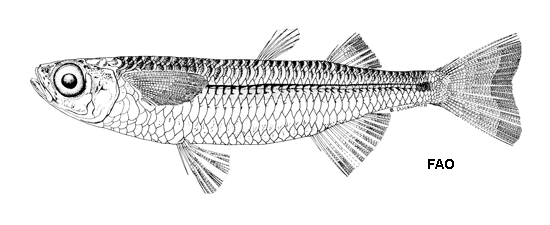| Atherinidae (Silversides), subfamily: Atherinomorinae |
| 17 cm TL (male/unsexed); max. reported age: 2 years |
|
pelagic-neritic; brackish; marine |
| Indo-West Pacific: known only from western and eastern Australia. |
|
Dorsal spines (total): 6-8; Dorsal soft rays (total): 8-10; Anal spines: 1-1; Anal soft rays: 12-15; Vertebrae: 40-43. Upper margin of dentary slightly ascending distally, without a distinct tubercle at the posterior end; posterior tip of upper jaw not extending beyond a vertical through anterior margin of pupil; midlateral scale count 39-42; midlateral band narrow, width about 2/3 to 5/6 that of midlateral scale at level of anal fin origin (Ref. 41049). |
| Found in shallow coastal waters, including bays and estuaries (Ref. 36661); can tolerate salinity as low as 3 parts per thousand (Ref. 9760). Usually in schools (Ref. 36661). Feeds on amphipods, copepods, isopods, crab and barnacle larvae, polychaetes, gastropods, chironomid midges, hymenopterans, ants, foraminiferans, and plant matter (Ref. 9760). Opportunistic feeder (Ref. 9760). Probably used as bait and for fishmeal (Ref. 9760). |
|
Not Evaluated (N.E.) Ref. (130435)
|
| harmless |
Source and more info: www.fishbase.org. For personal, classroom, and other internal use only. Not for publication.

